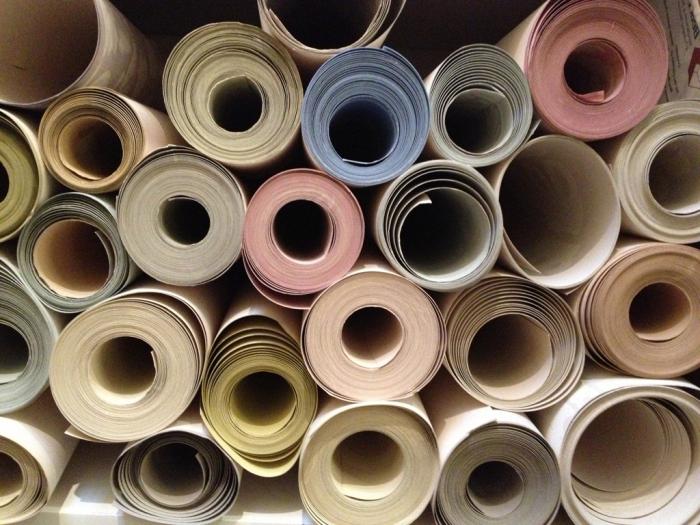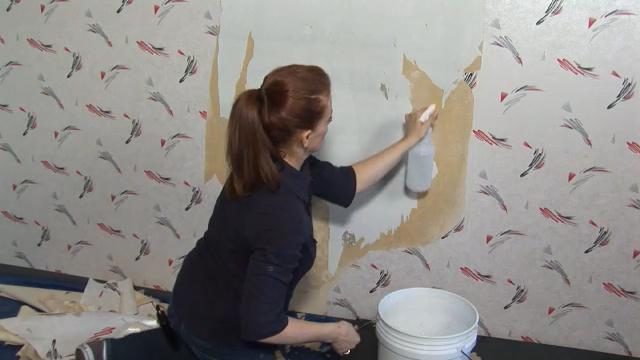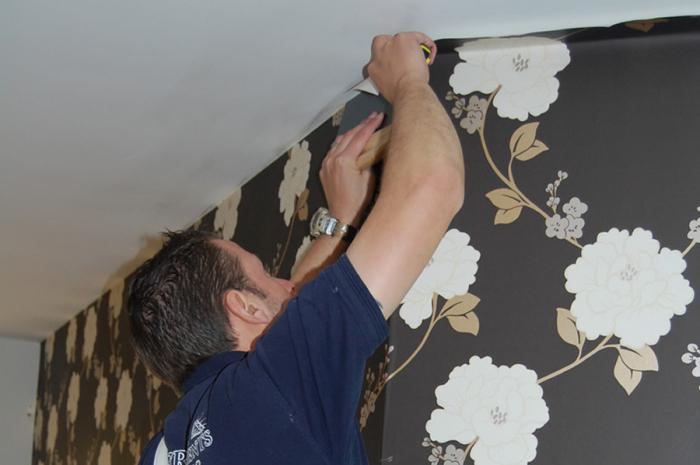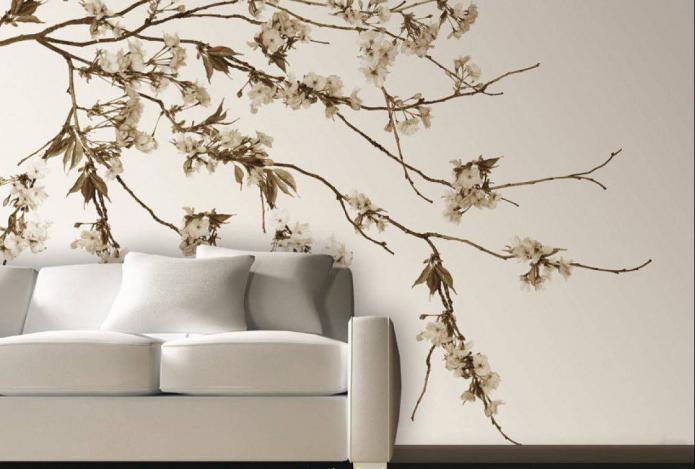How to glue non-woven wallpaper? How to paste wallpaper: photo, instruction
The last (but not least) stage of any repair is finishing work. Most people know how to paste wallpaper themselves, but keep in mind that new types of materials are emerging, and, accordingly, the technologies for gluing them vary.
Varieties of wallpaper
To date, the building materials market offers a huge selection of several types of wallpaper. Among them, obsolete paper, textile, liquid, dyed, glass and vinyl, which are the most common.
Non-woven wallpapers are also rapidly gaining popularity. Did you decide to use them as a finishing material? You need to know how to glue non-woven wallpaper correctly.
The structure and properties of non-woven material
This type of wallpaper has a number of advantages that favorably distinguish it from other finishing materials. It is characterized by increased strength, fire resistance, sound and noise insulation. Non-woven wallpaper does not fade in the sun (not exposed to ultraviolet radiation) and is environmentally friendly, which is important in our time.
Thanks to their special structure, they "breathe" and do not absorb foreign odors, and the top layer protects them from mechanical damage during processing and in everyday life.

Flizelin consists of two polymeric materials (textile and cellulose fibers) interconnected. At first, it was used to increase the stiffness of the fabric. Today, it has found application in the production of wallpaper, which has expanded the possibilities for interior decoration.
How much does wallpaper cost
The prices are very different. For example, a roll of material will cost at least 1,100 rubles. If you decide to use the services of specialists, then the cost of repairs will increase several times. Taking into account even prepared walls, an experienced builder will have to pay from 150 rubles for each square meter. It is difficult to give an unambiguous answer to the question of how much it costs to hang wallpaper, since construction companies do not have fixed prices. You can calculate only approximate costs based on the volume of the premises, the cost of materials and the work of specialists, if necessary.
Where to begin
The first step is to study the instructions that come with each roll. In most cases, it is a small leaflet on which the manufacturer indicates all the necessary information: type, expiration date, operating conditions, rules of use. If you have already had experience with paper, vinyl or any other wallpaper, this does not mean that you know how to glue non-woven wallpaper. This material is unique.

Some manufacturers write in the instructions that the wallpaper should be glued to the walls, pre-lubricated with glue, and the canvases themselves should be dry. Others indicate that the adhesive solution must be applied both to the wall and directly to the material. There are two options here: do it your own way or listen to the manufacturer's recommendations. The latter is always preferable.
The choice of adhesive solution
In the store, you have to make a choice that is difficult at first glance: to purchase a special or universal wallpaper adhesive based on non-woven fabric. The latter does not give any guarantee that the result will be of high quality, and the former will just meet all the necessary requirements.
They produce options for special glue for light and heavy wallpapers. And if the second type is suitable for all types of canvas, then the first one will not cope with heavy material. Therefore, it is important to be able to choose the right adhesive solution. Without this component, it will not be possible to understand how to glue non-woven wallpaper correctly and efficiently.
Wall preparation
Non-woven wallpaper can be glued not only on the walls, but also on the ceiling. At the same time, the technology of their fixation does not change, it is enough to equalize the difference in the levels of floor slabs. To do this, use a painting fiberglass mesh and starting putty. It is stirred to a medium density state and watched so that no lumps remain. Putty is applied with a spatula and distributed over a grid previously attached to the wall. High-quality wall preparation directly affects the durability of the wallpaper, therefore, before sticking non-woven wallpaper, special attention should be paid to this moment.

The surface of the walls must also be completely cleaned of old materials, any dirt, stains and other things. When old wallpaper cannot be removed manually, they should first be moistened with hot water (a spray gun will do), after which the canvas can be easily removed with a spatula. To get rid of oil paint, it is recommended to use a grinder. The latter can be replaced with sandpaper, which will ensure good adhesion of the primer and glue to the wall.
The next step is to apply the primer with a wide brush or roller. For inner corners use a narrow brush. It is important to allocate a certain time until the primer dries completely. Otherwise, it may mix with the adhesive, causing its properties to decrease. It should also be borne in mind that different wall surfaces absorb the adhesive solution in different ways, so the procedure may need to be carried out twice, no more.
How to paste wallpaper
Before gluing the first sheet on the wall, it is necessary to draw a straight vertical line. The first sheet is applied along it to the wall, previously lubricated with an adhesive solution (they are processed in width with a margin of 10 cm), that is, taking into account the standard sheet size of 100 cm, at least 110 cm. When the dry sheet is applied to the wall, it is leveled with a roller, expel air and excess glue. For each next band, the algorithm is identical.

How to glue wallpaper in the corners? In such areas of the room, the canvases are overlapped: the first sheet is glued to the limits of the corner, and the next one is right next to the corner, that is, they are applied to the first one. The standard overlap width is 5 cm. After that, a ruler is applied to its middle. With the help of a special wallpaper knife, a through cut is made, then the excess cloths are removed. This is a working technique, thanks to which you can understand how to glue wallpaper in the corners quickly and efficiently.
Sockets
Before starting work, it is important to de-energize the sockets, remove the covers from them. An incision is made crosswise on the sheet so that its center hits the location of the outlet. After that, the edges of the wallpaper are brought inside the box (they need to be well glued to its walls). The lid is then screwed back on. Photos, how to stick wallpaper, will become a guide to action.
Features of painting material
The tinting of the wallpaper is started after they are completely dry. For this, several types of paint are used:
- acrylic;
- latex;
- water emulsion.

The top layer of non-woven wallpaper is a flat or foamed vinyl. The latter is recommended to be painted over more carefully due to its uneven surface. For this, a paint brush, roller or spray gun is usually used. Two layers are applied. The second time the walls are painted only when the first layer of paint is completely dry.
Wallpaper is pasted from the window to the wall opposite. It is important to note that up to 10 layers of paint can be applied to non-woven material without any consequences. Acrylic is considered the most high-quality and durable.
